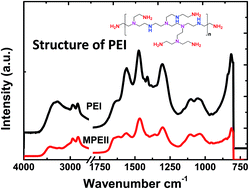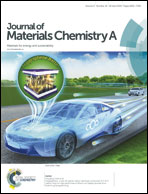Cationic polymer binder inhibit shuttle effects through electrostatic confinement in lithium sulfur batteries†
Abstract
Irreversible chemical reactions frequently cause capacity fading and poor cycle life in lithium–sulfur (Li–S) batteries due to the formation of irreversible lithium polysulfides. Recently, at the Lawrence Berkeley National Lab, an unexpected cationic polymer strategy resulted in the capture of irreversible polysulfides, which greatly enhanced the Li–S cycling performance. The branched polyethylenimine (PEI) polymer with a high density of amine groups can trap lithium polysulfides through the interaction between –NH in the amine group and soluble Li2Sx. To boost this interaction, cationization was achieved through nucleophilic substitution with CH3I, where the cationic PEI (denoted as MPEII) exhibited enhanced affinity to polysulfides. MPEII attracted not only lithium polysulfide through Li–N and Li–I attraction, but also Sx2− by electrostatic attraction of the positively charged N after cationization. The cell with MPEII binder exhibited better performance than that with PEI in the self-discharge test. It also achieved a high S loading of 6.5 mg cm−2 with high areal capacity of 6.48 mA h cm−2 and consequent areal capacity of 985 mA h g−1 after 10 cycles.



 Please wait while we load your content...
Please wait while we load your content...
